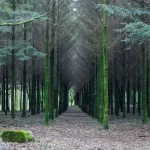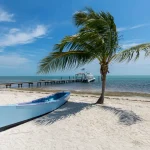
Discovering the Hidden Gems of Nepal: A Journey Through the Land of Mountains and Monasteries

Introduction
Nepal, a small landlocked country nestled in the Himalayas, is a captivating travel destination that offers a unique blend of natural beauty, cultural richness, and spiritual traditions. Known as the birthplace of Lord Buddha and home to the world’s highest peak, Mount Everest, Nepal has long been a magnet for adventure seekers and spiritual seekers alike. From its famous landmarks such as Kathmandu Durbar Square and Pashupatinath Temple to its hidden gems like Bandipur and Ilam, Nepal has something to offer every traveler.
Exploring the Hidden Gems of Nepal
While Nepal is famous for its iconic landmarks, there are also lesser-known destinations that offer a more off-the-beaten-path experience. One such hidden gem is Bandipur, a charming hilltop town that offers breathtaking views of the surrounding mountains. Here, visitors can explore the narrow streets lined with traditional Newari houses, visit ancient temples, and immerse themselves in the local culture.
Another hidden gem in Nepal is Ilam, a picturesque district located in the eastern part of the country. Known for its tea gardens and lush green landscapes, Ilam offers a tranquil escape from the bustling cities. Visitors can take leisurely walks through the tea gardens, visit local monasteries, and indulge in delicious tea tasting sessions.
Tansen, located in the Palpa district of Nepal, is another hidden gem that is worth exploring. This ancient hill town is known for its rich history and stunning architecture. Visitors can wander through the narrow streets lined with traditional Newari houses, visit the historic Tansen Durbar, and enjoy panoramic views of the surrounding mountains from Srinagar Hill.
Discovering the Cultural Richness of Nepal
Nepal is a melting pot of diverse cultures and traditions. The country is home to various ethnic groups, each with its own unique customs and practices. From the vibrant festivals to the intricate architecture, Nepal’s cultural richness is evident in every aspect of daily life.
One of the most important cultural sites in Nepal is the Pashupatinath Temple, located in the capital city of Kathmandu. This sacred Hindu temple is dedicated to Lord Shiva and attracts thousands of devotees from around the world. Visitors can witness traditional rituals and ceremonies, and experience the spiritual atmosphere of this ancient temple.
Another cultural site not to be missed is Swayambhunath Stupa, also known as the Monkey Temple. Perched on a hilltop overlooking the Kathmandu Valley, this Buddhist stupa is one of the oldest religious sites in Nepal. Visitors can climb the steps to reach the stupa, spin the prayer wheels, and enjoy panoramic views of the city.
Bhaktapur Durbar Square, located in the ancient city of Bhaktapur, is another cultural gem that showcases Nepal’s rich heritage. This UNESCO World Heritage Site is home to numerous temples, palaces, and courtyards that reflect the architectural brilliance of the Newari people. Visitors can explore the intricately carved wooden structures, admire the ancient artwork, and witness traditional dances and music performances.
Trekking through the Himalayas
Nepal is renowned for its trekking routes that offer breathtaking views of the Himalayas. From short hikes to challenging multi-day treks, there are options for every level of fitness and experience.
The Everest Base Camp Trek is one of the most popular trekking routes in Nepal. This iconic trek takes you through picturesque Sherpa villages, lush valleys, and rugged mountain terrain. The highlight of the trek is reaching Everest Base Camp, where you can marvel at the majestic Mount Everest up close.
The Annapurna Circuit Trek is another famous trekking route that takes you through diverse landscapes and remote villages. This trek offers stunning views of snow-capped peaks, terraced fields, and deep gorges. The highlight of the trek is crossing the Thorong La Pass, one of the highest mountain passes in the world.
For those looking for a shorter trek, the Langtang Valley Trek is a great option. This trek takes you through the beautiful Langtang Valley, known for its alpine forests, glacial lakes, and snow-capped peaks. The highlight of the trek is reaching Kyanjin Gompa, a Buddhist monastery located at an altitude of 3,870 meters.
Exploring the Natural Wonders of Nepal
Nepal is blessed with an abundance of natural wonders, including national parks, wildlife reserves, and pristine lakes. These natural attractions offer a chance to get up close and personal with Nepal’s diverse flora and fauna.
Chitwan National Park, located in the southern part of Nepal, is one of the best places to experience wildlife in its natural habitat. This UNESCO World Heritage Site is home to endangered species such as the Bengal tiger, one-horned rhinoceros, and Asian elephant. Visitors can go on jungle safaris, take boat rides along the Rapti River, and witness traditional Tharu cultural performances.
Bardia National Park, located in the western part of Nepal, is another hidden gem for wildlife enthusiasts. This remote and less-visited national park offers a chance to spot rare species such as the Gangetic dolphin and the Bengal florican. Visitors can go on jeep safaris, take nature walks with experienced guides, and stay in eco-friendly lodges.
Rara Lake, located in the far-western region of Nepal, is one of the most beautiful lakes in the country. Surrounded by snow-capped mountains and dense forests, this pristine lake offers a tranquil retreat for nature lovers. Visitors can go boating on the lake, hike to nearby viewpoints for panoramic views, and camp by the lakeside.
Experiencing Nepalese Cuisine
Nepalese cuisine is a delightful blend of flavors and spices, influenced by the country’s diverse ethnic groups and neighboring countries. From momos to dal bhat, there are plenty of delicious dishes to try during your visit to Nepal.
Momos, a type of dumpling filled with meat or vegetables, are a popular street food in Nepal. These steamed or fried dumplings are usually served with a spicy tomato-based sauce and are a favorite among locals and tourists alike.
Dal bhat, the national dish of Nepal, is a hearty meal consisting of lentil soup (dal), rice (bhat), and a variety of side dishes such as curries, pickles, and yogurt. This wholesome meal is a staple in Nepalese households and is often served with roti or chapati.
Chow mein, a stir-fried noodle dish, is another popular dish in Nepal. This Chinese-inspired dish is made with egg noodles, vegetables, and meat or tofu. It is often flavored with soy sauce, garlic, and ginger, and is a favorite among locals and tourists alike.
Discovering the Spiritual Side of Nepal
Nepal is not only known for its natural beauty and cultural heritage but also for its spiritual traditions. The country is home to numerous spiritual sites where visitors can experience meditation, yoga, and other spiritual practices.
Lumbini, located in the southern part of Nepal, is the birthplace of Lord Buddha and one of the most important pilgrimage sites for Buddhists around the world. Visitors can explore the sacred garden where Buddha was born, visit monasteries from different Buddhist traditions, and participate in meditation retreats.
Kopan Monastery, located on the outskirts of Kathmandu, is another popular destination for spiritual seekers. This Tibetan Buddhist monastery offers meditation courses and retreats for beginners as well as advanced practitioners. Visitors can learn about Buddhist philosophy, participate in daily prayers and rituals, and enjoy the peaceful surroundings.
Boudhanath Stupa, located in the heart of Kathmandu, is one of the largest Buddhist stupas in the world. This UNESCO World Heritage Site is a center of Tibetan Buddhism and attracts pilgrims from all over the world. Visitors can walk around the stupa, spin the prayer wheels, and observe monks and nuns performing their daily rituals.
Exploring the Traditional Crafts of Nepal
Nepal has a rich artistic heritage, and traditional crafts such as pottery, weaving, and woodcarving are still practiced by artisans across the country. Visitors can explore local markets and workshops to witness these crafts being made and even try their hand at creating their own masterpieces.
Pottery is an ancient craft that has been practiced in Nepal for centuries. Artisans use traditional techniques to create beautiful clay pots, vases, and other decorative items. Visitors can visit pottery villages such as Thimi and Bhaktapur to see the pottery-making process and purchase unique handmade souvenirs.
Weaving is another traditional craft that is deeply rooted in Nepalese culture. Artisans use handlooms to create intricate textiles using natural fibers such as cotton, silk, and wool. Visitors can visit weaving centers in places like Panauti and Dhulikhel to see weavers at work and purchase handwoven fabrics and garments.
Woodcarving is a highly skilled craft that is widely practiced in Nepal. Artisans use traditional tools to carve intricate designs on wood, creating beautiful sculptures, furniture, and decorative items. Visitors can visit woodcarving workshops in places like Patan and Bhaktapur to see master craftsmen at work and purchase unique wooden artifacts.
Discovering the Festivals of Nepal
Nepal is known for its vibrant festivals and celebrations that showcase the country’s rich cultural heritage. From religious festivals to harvest celebrations, there is always something to celebrate in Nepal.
Dashain, also known as Vijaya Dashami, is the biggest and most important festival in Nepal. This 15-day festival celebrates the victory of good over evil and is marked by elaborate rituals, feasts, and family gatherings. Visitors can witness the traditional animal sacrifices, enjoy cultural performances, and participate in the festive atmosphere.
Tihar, also known as Deepawali or the Festival of Lights, is another major festival in Nepal. This five-day festival celebrates the bond between humans and animals and is marked by lighting oil lamps, decorating homes with colorful rangoli designs, and offering prayers to the goddess of wealth. Visitors can witness the lighting of lamps in the streets, enjoy traditional music and dance performances, and participate in the festivities.
Holi, also known as the Festival of Colors, is a joyous celebration that marks the arrival of spring. This vibrant festival is marked by throwing colored powders and water at each other, singing and dancing, and enjoying festive food and drinks. Visitors can join in the fun by participating in color-filled celebrations in cities like Kathmandu and Pokhara.
Conclusion
A trip to Nepal is a transformative experience that offers a unique blend of natural beauty, cultural richness, and spiritual traditions. From exploring hidden gems like Bandipur and Ilam to trekking through the Himalayas and experiencing Nepalese cuisine, there is something for every traveler in this enchanting country. Whether you are seeking adventure, spiritual enlightenment, or simply a chance to immerse yourself in a different culture, Nepal has it all. So why wait? Start planning your own journey to Nepal and discover the magic that awaits you.
If you’re planning a trip to Nepal, you might also be interested in exploring the wonders of Sweden. From its stunning landscapes to its rich history and culture, Sweden offers a unique travel experience. Whether you’re exploring the vibrant city of Stockholm or venturing into the picturesque countryside, there’s something for everyone in this Scandinavian gem. Check out this article for more information on the top places to visit and things to do in Sweden.
Recent Posts


Discovering the Enchanting Beauty of Faroe Islands: A Journey to Denmark’s Hidden Gem
